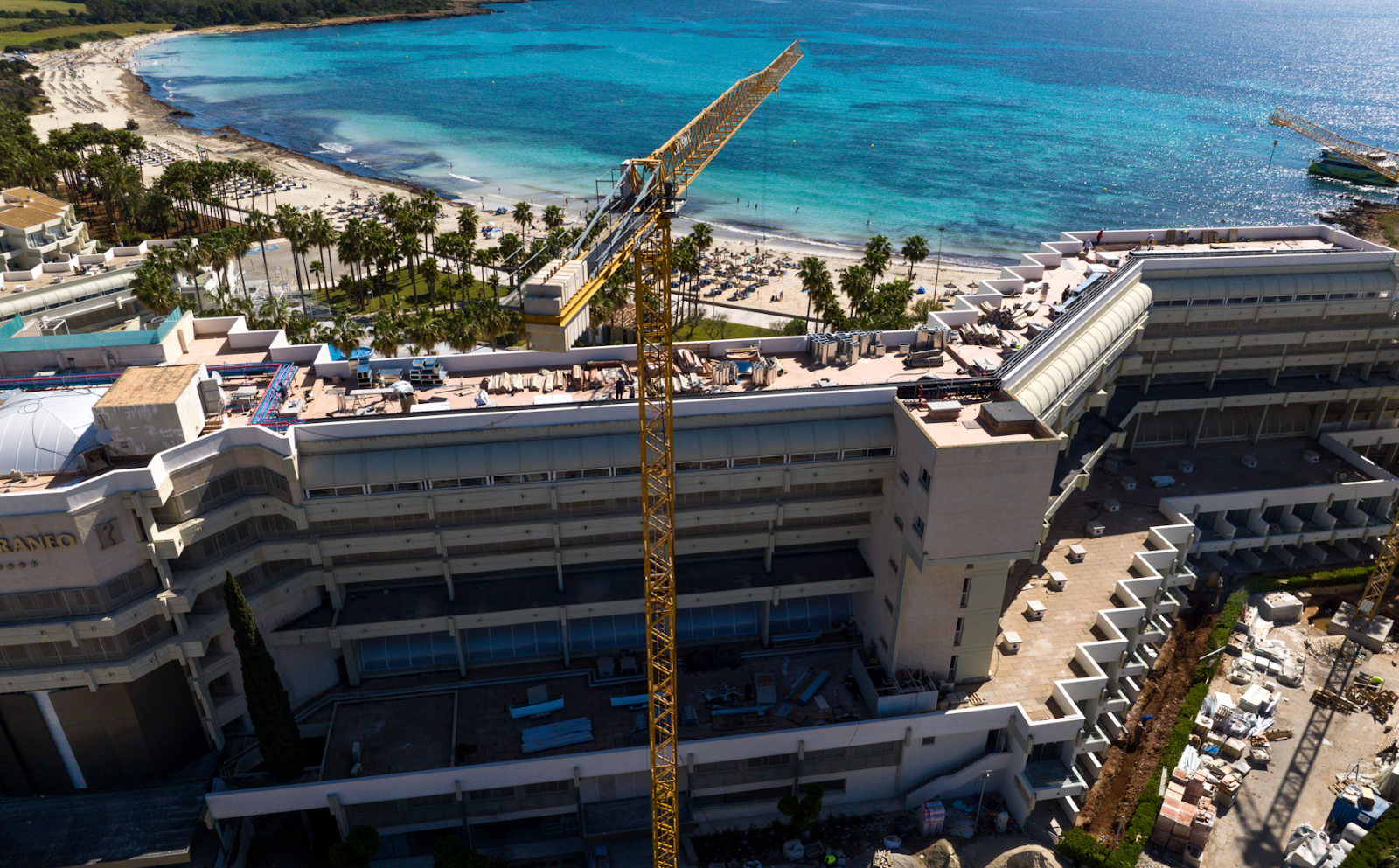The integral maintenance of installations includes corrective, conductive and preventive maintenance of the installation with the objective of slowing down deterioration, delaying malfunctions and ensuring the general good condition of the system.
The benefits of having a comprehensive facility maintenance service are innumerable, but it is worth highlighting the following:
Increases efficiency
Regular maintenance ensures that all equipment, systems and infrastructure of the facility function optimally. And this minimizes the risk of breakdowns, operational interruptions or downtime that result in a loss of efficiency.
Asset protection
Building facilities house valuable assets, such as equipment, machinery or technology.
Comprehensive maintenance avoids costly repairs or replacements and increases the service life of installationsimproving its management and profitability.
Safety and quality
Comprehensive facility maintenance ensures safety and is key to the safety of the facility. addressing potential hazards, ensuring compliance with regulations, norms and quality standards.
Energy efficiency and sustainability
Facilities with a good HVAC system and maintenance can reduce their energy consumption and reduce electricity costs. If HVAC systems, lighting networks and other electronic equipment are kept up to date in terms of maintenance, the The reduction of unforeseen expenses can also be considerable.
A comprehensive maintenance plan also includes initiatives to better use of water or reduction of waste.
Reduced risk of sanctions
Building and industry facilities are subject to health, safety, environmental and construction standards as specified in the Regulation of thermal installations in buildings.
Comprehensive maintenance of the same avoid fines, penalties and legal liabilities.
What does comprehensive facility maintenance consist of?
Virtually all facilities require ongoing comprehensive maintenance associated with certain areas, including:
- Electrical installations. Verification of safety and operation of lighting and power distribution systems (low - medium voltage), and backup generators.
- Air conditioning installations. Filter replacement, cleaning and repairs in heating, ventilation and air conditioning (HVAC) systems.
- Plumbing installations. Supervision, repair and prevention of leaks in pipes, faucets, toilets and drains.
- Telecommunications and security installations. Review for proper operation of voice and data networks, audio/video, telephony, CCTV, Wi-Fi, installations with GPON technology, access control systems and alarms.
- Firefighting installations. Periodic control of all firefighting systems, including BIES networks, splinkers, water mist sprinklers and fire detection, extinguishing and signaling systems.
- Green facilities. Review and cleaning of Solar Thermal and Photovoltaic systems and outdoor areas of the facilities, paying attention to landscaping, lawn care or snow removal to ensure a safe and attractive environment.
What is the difference between maintenance and integrated facility management?
Although facility management and maintenance are related, The first is based on the planning, coordination and supervision of assets throughout their useful life.
That is, in the integrated facilities management attention is paid to issues beyond its operation, such as leases and contracts, space occupancy, suppliers, or user experience.
MaintenanceThe company, on the other hand, focuses on daily tasks that can provide increased operational efficiency of the facilities, ensuring their safety, extending their service life and increasing their profitability.
Types of integral maintenance
A comprehensive facility maintenance plan includes several phases:
Preventive maintenance
This maintenance ensures that the facilities and machinery are in perfect working order at all times, since it establishes to prevent breakdowns and is based on anticipation.
Within a preventive maintenance plan, both the following are observed scheduled inspections of the facilities, such as tests and maintenance work carried out at regular intervals.
Corrective maintenance
It consists of carrying out those small repairs that preventive maintenance has not been able to detect or that arise unexpectedly.
Normally, it consists of solve minor faults and damage to prevent major damage since preventive maintenance has prevented a major failure.
This maintenance is also known as "reactive maintenance" because it is the response to a failure or breakdown, and its objective is to restore the facilities to normal operation as soon as possible.
Technical-legal maintenance
It is executed following compliance with regular inspections, tests, documentation and reporting for ensure that the installations comply with current safety, health or environmental regulations.
It is related to the issuance of certificates in compliance with theand (e.g., replacement and maintenance of fire extinguishers), the technical inspectionsthe expert reportsthe prevention plan updates or the energy audits.
What is "smart maintenance"?
Implement the latest technologies in facility maintenance is to use data and advanced analytics to predict when equipment or systems are likely to fail, facilitating proactive decision making.
At Talat we have developed a software based on the experience of registered and digitized installations, which allows us to perform a intelligent maintenance of all types of infrastructures.
The program allows develop annual Comprehensive Plans covering preventive, technical-legal and biosanitary maintenance of the installations, adjusting to the needs of each project, and facilitating the execution of energy efficiency studies, reviews, reports or certificates.
Thanks to this software, we also offer advice on inspections or to plan your potential investments.
Contact with us if you want to know more about integral maintenance of facilities or integral maintenance.


